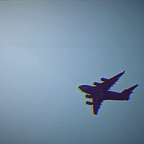LCA Tejas Timeline
This is a very compact version of the timeline of the LCA Tejas Program from inception to current status.
1975–76 — LCA was perceived as a replacement for Gnat, with Ajeet having not come up to expectations
1978–79 — A draft Air Staff Target was prepared by Air HQ, HAL and R&D.
1979–82 — AST draft was upgraded from a low cost tactical aircraft to replace Gnat, to a sophisticated high performance state of the art LCA.
1982–84 — A technical team of experts headed by Dr S R Valluri, and then DCAS visited various design firms/manufacturers in Italy, Germany, France, UK and Sweden and later even USA to explore ToT and JVs for their own LCA design studies being conducted, like MBB’s TKF90, Dorniers ND102 or BAe’s P.106 etc.
1983 — OKBs from USSR pitched their design studies for the LCA requirements as well, which apparently met all requirements but were heavier.
1983 — GOI invited the committee to carry out a feasibility study for LCA.
1984 — ADA was created as an autonomous independent agency under SecDef R&D.
1985, January 30 — LCA program was formally launched at the first general body meeting of ADA.
1985 — AST 201 was decided and a formal Air Staff Requirement, ASR 2/85 was issued in October. At this point LCA has been firmly established as a replacement of MiG21s.
1985 — USAF was roped in to help develop FBW FCS. F404 engine was offered for the program.
1987 — 11 GE F404s were procured.
1988 — Project Definition Report was completed with help from Dassault-Breguet, and submitted to Air HQ in September. A timeline was formalized with 2 phases. Air HQ sent back a 300 page report back to ADA expressing serious concerns.
1989 — To resolve the issues a high level committee held six meetings b/w May 31 and Aug 29. Skepticism regarding the program had set in.
1989–90 — Phase 1 of the program was underway, with a host of R&D facilities and equipment being procured and developed. 80 work centres were identified and established, with the likes of HAL,NAL, DRDO’s labs, IITs, IISc etc.
1990 — Design had been finalised and frozen.
1991 — A high fidelity 1:6 scaled high speed model with movable control surfaces was fabricated and handed over to ADA in June. Model was then sent to Arnold Engineering Development Center by ADA. Further data was complemented from 1:15 models tested at Calspan, NAL, and 1:6 model sent to TsAGI for external store loads and pressure data.
1992 — ADE/DRDO signed an agreement with Martin Marietta Corporation (Now Lockheed Martin) for assistance in developing quadruplex digital FBW.
1993 — Funding to develop 2 TD aircraft was finally cleared, after a delay of 1 year due to paucity of funds resulting from political and economic crisis at the time.
1995 — TD1 (KH2001) rolled out on 17 November.
1998 — Lockheed Martin withdrew assistance due to American sanctions on India. TD2 (KH2002) rollout.
2001- TD1 made its maiden flight with an indigenous quadruplex digital FBW FCS. After first block of 12 flights, TD1 was grounded. First EGR of TD2 in December. Issue with blockage of fuel cooled oil coolers observed. GOI sanctioned development of IJT, manforce at HAL got divided and overburdened, straining LCA team.
2002 — Few more EGR and low speed taxi tests of TD2 by February. Hydraulic leaks detected, plumbing had to be redone. FRRB cleared, in May, TD2 for flight. TD2 makes its maiden flight on 6th June. LSP order for LCA was placed. Post sanctions, a new contract for FCS actuators was placed with Lockheed Martin, for actuators ordered in 1998, with delivery timeline starting from 2004. In September, talks with Russian side regarding the CCM for LCA breakdown due to sudden cost increase.
2003 — TD1 flew again on February 3. PV1(KH2003) conducts its first flight on 25 November.
2005 — PV2(KH2004) conducts its first flight on 1 December.
2006 — PV3(KH2005) flew for the first time 1 December. PV2 went supersonic with weapons
2007 — LSP1(KH2011) makes its first flight on 25 April with F404-F2J3. PV2 and 3 went sea level trials at INS Rajali. PV1 fired an R73 for the first time in October.
2008 — LSP2(KH2012) makes its first flight on 16 June with F404-IN20. PV3 made the first night sortie.
2009 — 2 seater PV5(KH-T2009) trainer variant makes its first flight. 1000 sorties had been completed by other frames till now. Production sanctioned.
2010 — LSP3(KH2013) flies for its first time. LSP4(KH2014) in Mk1 standard flies for the first time with MMR, IFF, and CDS. LSP5(KH2015) in IOC standard flies for the first time. 2 seater First Naval prototype NP1(KHN-T3001) rolled out.
2012 — LSP7(KH2017) flies for the first time on 9th March. NP1(KHN-T3001) flies for the first time.
2013 — LSP8(KH2018) final production standard flies for the first time in March.
2014 — Adv Weapon trials completed over LSP3/5/7
2015 — First SP1 was handed to IAF. NP2 flies for the first time
2016 — First LCA sqn becomes operational.
2019 — LCA gets FOC.
2020 — Naval LCA lands and takes off from INS Vikramaditya. Second LCA sqn becomes operational
2022 — LCA Mk1A first flight in May.
2023 —NP5 (3005), third LCA Navy prototype conducted first flight. First Flight test of Astra BVRAAM from Tejas, by LSP — 7.
